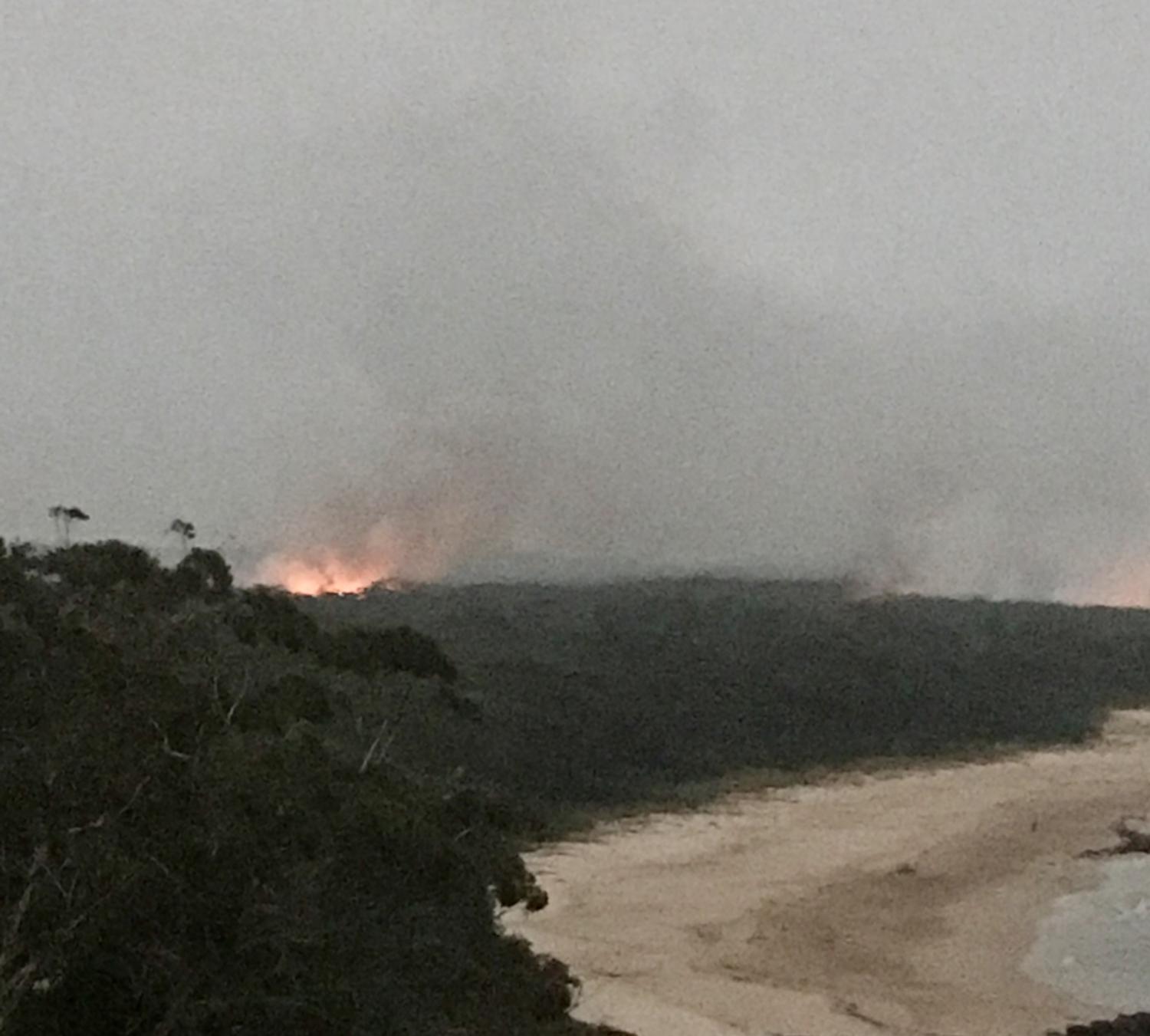This was supposed to be an idyllic week on the east and south coasts of Australia, when thousands of families traditionally set off after Christmas for their beach holidays at houses, caravan parks and campgrounds scattered down our long, magnificent coastline.
We were among the hordes headed south from Sydney. There had been fires in the previous weeks, and some warnings to stay away. But our holiday was planned, the existing fires seemed to have abated somewhat, and we abandoned caution and set off anyway. We made one good decision that day, leaving my children – two young adults and one teenager – at home, due to join us on New Year’s Day if the coast was (literally) clear. The common message from friends in the country and on the coast as we made our way down was the need to support local communities down there; many rely on January tourism for their livelihoods.
Our reliance on information via the internet and broadband communications left us exposed. Nothing was working, mobile phone coverage was almost non-existent. Emergency services’ websites were inaccessible. Fridges warmed, ice melted, houses heated up.
The smoke haze was thick, but not much worse than it had been in Sydney in the weeks leading to Christmas. The beaches were pristine and the water cool. But then the heat came on New Year’s Eve, the plumes of bushfire smoke over the area became bigger and darker, the power supply was cut, and with it, all communications. Our reliance on information via the internet and broadband communications left us exposed. Nothing was working, mobile phone coverage was almost non-existent. Emergency services’ websites were inaccessible. Fridges warmed, ice melted, houses heated up. Our New Year’s Eve celebration with friends down the road was spent by candlelight, warily eyeing the coastline to the north, dotted with fires which flared up as darkness fell. Messages from family (via Facebook’s messenger service, which apparently uses very little data, allowing short text messages to get through) informed us that the road out of the town and back to Sydney was closed in both directions.
After an uneasy night, we ventured down to the town. We were touched by small acts of human kindness. The thoughful local bottle-shop owner who handed out free ice while supermarkets were closed. The locksmith who came to help unlock an electric gate which had stuck closed, leaving us unable to get our car out of the driveway if we needed to leave quickly. People shared stories on the street. Anxiety was palpable. There was nothing much we could do. We had food and water, but little appetite.
My children sent messages wishing us happy new year, and asking us what we’d done during the day. Read, walked, watched, fretted, was my response. We sat in the car listening to the local ABC radio coverage. That coverage – comprehensive, human, informative – felt like our best friend over those two days when nothing much else was getting through. That, and the Rural Fire Service with its exhausted volunteers out there fighting blazing fire fronts on our behalf.
These first days of 2020 have been terrible, but the worst is apparently yet to come with temperatures and winds set to rise this weekend. What appears to be half the state of New South Wales and much of Victoria is on fire. The federal government’s response seems to have struggled to strike the right tone with communities affected by the disaster. People who have lost their properties or worse – friends or colleagues killed in the fires – are visibly and viscerally angry. At their own plights, but also those of their communities and their strained fire-fighting services, many of which are staffed by exhausted volunteers who have been battling fires on many fronts for months.
The federal government has so far painted the crisis as a natural disaster, and a matter primarily for state government emergency services to handle in coordination with federal agencies such as the Australian Defence Force. There has been a seeming reluctance at a federal level to link the fires, and the drought which preceded them, directly to climate change or Australia’s climate policy. Early indications of the government’s policy responses are a focus on hazard reduction (reducing fuel loads around homes and residential areas). The government has reiterated the current policy of adhering to existing targets under the Paris accords, citing Australia’s small contribution to global emissions and the limits of its ability to counter rising emissions from the largest carbon-emitting countries. In the context of this fire crisis, this stance risks inflaming tensions among the more than half of Australians (according to Lowy Institute and other polling) who see climate change as a serious and pressing problem and who seek stronger action from government.
We managed to leave the South Coast in the early hours of 2 January when the main highway – the only way out – was opened briefly in the middle of the night. For much of the way up the coast, burning embers, fallen logs, and glowing tree trunks lined the road. Every side street was barred by police or fire trucks, hinting at the devastation behind the roadblocks. I silently lamented my foolish decision to travel south, placing an additional potential burden on local emergency authorities.
Our lost, longed-for beach holiday is now a distant regret. What's left is grief for our ravaged countryside.
We are holding our breaths for what is to come tomorrow.

